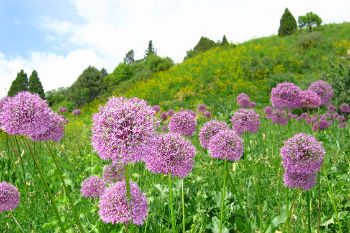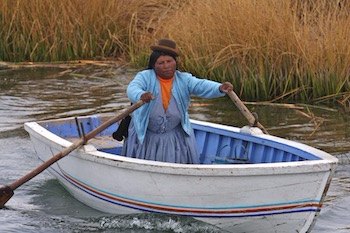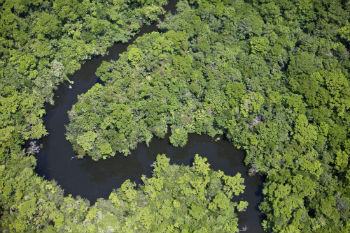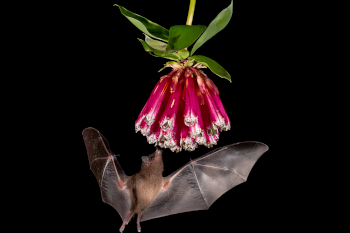Main menu
CEPF is a joint initiative of l’Agence Française de Développement, Conservation International, the European Union, Fondation Hans Wilsdorf, the Global Environment Facility, the Government of Canada, the Government of Japan and the World Bank. A fundamental goal is to ensure civil society is engaged in biodiversity conservation.
Visitez le site français コア情報の日本語翻訳を読むOr use Google Translate to translate the English site to your language:
GTranslate
5 Success Stories From the Caribbean
Grantees made big strides during CEPF's first investment in the hotspot
03 October 2016
03 October 2016
CEPF recently announced it will reinvest in the Caribbean. As we wrap up our initial, six-year, investment in the hotspot, we take a look at some of CEPF grantees’ greatest achievements thus far.
1. FOLLOWING THE TRAIL FORWARD IN ST. VINCENT
"The reforestation activities worked. The communities see the transformation, are benefiting from it and are engaged in conserving their place. We are proving that even with a small fund, you can make a change."– Simeon Green, Diamond Village Community Heritage Organisation
When the ecosystem of Diamond Village—a rural community in northeastern St. Vincent— collapsed from unsustainable farming practices and deforestation, economic opportunities for the local people collapsed, too. With the help of a CEPF grant, Diamond Village Community Heritage Organisation set out to solve both problems.
The organization invested in conservation awareness activities, reforested land around the watershed and created the Bubby Stone Trail, a hiking path through key cultural and environmental sites that is promoted as a new ecotourism destination. Locals trained in culinary services now make an income selling food to tourists. The partnerships that the organization formed with the Forest Department, the Central Water and Sewage Authority, and national media pave the way for continuing collaborations.
2. A GREENER FUTURE ON THE BAHAMAS’ SAN SALVADOR ISLAND
“Thanks to this project, the voices of local stakeholders were heard, and these key ecosystems are now protected.”– Lakeshia Anderson, The Bahamas National Trust
Years before CEPF got involved, there were already local people and organizations lobbying to protect San Salvador, a 63-square-mile island in The Bahamas. The island’s two Key Biodiversity Areas (KBAs) are home to many sea birds and endemic species, including the Critically Endangered San Salvador rock iguana (Cyclura rileyi rileyi). Unfortunately, political impediments and development problems with private landowners stymied conservation efforts.
A few years ago, however, when the national government committed to increasing the amount of the country’s protected lands in order to meet international goals for the protection of KBAs, possibilities opened up.
In 2013, The Bahamas National Trust began a CEPF-funded project working with local partners to create a national park on the island. They drafted a park proposal and management plan, implemented outreach activities, and trained community members in biodiversity monitoring. In 2015, the government announced the establishment of the San Salvador National Park—an achievement years in the making.
3. BRINGING ST. LUCIA AND ANTIGUA & BARBUDA BACK TO LIFE
“The eradication methods developed under this project are now being used in other countries in the Caribbean, and these islands have become a model and study site.”– Jennifer Daltry, Fauna & Flora International
Invasive species are a major threat to the native reptiles, plants and birds found in the Caribbean Islands. In 2012, with help from a CEPF grant, Fauna & Flora International (FFI) implemented a project to eradicate and control rodents (Rattus rattus, R. norvegicus), small Asian mongooses (Herpestes javanicus) and goats (Capra hircus) in three priority KBAs.
FFI worked with government authorities and nonprofit organizations, providing training and developing eradication methods that were successfully applied by local groups. As a result, the area of islands kept free of invasive species has increased, populations of important endemic and threatened species have rebounded, and local communities are benefitting from a boost in tourism opportunities.
In addition, local civil service organizations are now trained to lead monitoring and eradication of invasive species, reducing their dependence on international nonprofit organizations and promoting the long-term viability of these efforts.
FFI also brought together, for the first time, conservation practitioners from St. Lucia and Antigua and Barbuda through exchange visits, enabling them to learn from one another.
4. SAVING ONE OF HAITI’S LAST GREAT FORESTS
“At first, people were wary and distrustful of the project — we didn’t really understand what would happen. And then, with the first results we saw that it was good for us, and we changed our behaviors. Now I am really happy.” – Oralus Louis, local farmer in the Mara community
The Unit 2 Pine Forest Natural National Park—one of the last large, biodiversity-rich forests in Haiti—has suffered rampant deforestation. With support from CEPF, L’Organisation des Paysans pour le Développement de l’Unité 2 de la Forêt des Pins reforested 227 cleared hectares with native tree species and protected 100 hectares of the local Rak Bwa broadleaf forest. In addition, an ethnobotanical study identified and inventoried more than 110 species of medicinal plants.
More than 200 women were trained in gardening, organic agriculture and the valuation of non-timber forest products. Some 1,000 local students participated in summer activities focused on raising environmental awareness. More than 200 families received support to develop vegetable crops, making up for income lost from the cessation of unsustainable subsistence practices.
5. COCOA BEANS AND CARBON OFFSETS IN THE DOMINICAN REPUBLIC
"This project is good for the environment, it’s sustainable and it’s profitable.”– Jesus Moreno, Fundación Loma Quita Espuela
With support from CEPF, Consorcio Ambiental Dominicano and its partners accomplished several firsts in the Dominican Republic. The organization established the country’s first private reserve, Reserva Privada El Zorzal—which is also a bird sanctuary, most notably for Bicknell’s thrush (Catharus bicknelli)—and sold the first carbon offsets in the Caribbean.
Local farmers plant a mix of cacao and native wood species. They receive a premium price for their cacao from U.S.- and Canadian-based chocolatiers who then sell the chocolate as fair trade. This model has been so successful that it will likely be replicated at the national level.
Thank you to Yessenia Soto from CEPF grantee Rainforest Alliance for her contributions to this article.





